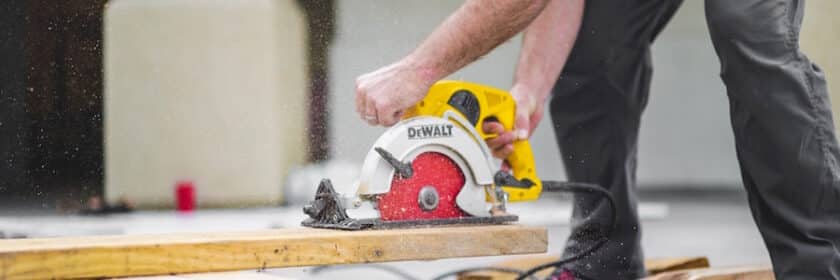Construction Mortgages Versus Traditional Mortgages
Table of Contents
The Benefits Of A Construction Mortgage And How It Differs From A Traditional Mortgage
Most home buyers need a mortgage loan to complete their home purchase. But the type of mortgage you get depends on whether you are buying an existing home or one that has yet to be built. Many home buyers obtain a traditional mortgage to purchase an existing home, however, a construction mortgage is also an option for those who want to build their own custom home from the ground up.
What Is a Construction Mortgage?
A construction or home builder’s mortgage covers the costs of building your new home, including materials, contractors, and fees for permits, inspections, and lawyers. It may or may not cover the cost of the land to build your house on.
With a construction mortgage, funds will be released to you in installments as each stage of construction is completed. This is known as a progress-draw.
Pros and Cons of a Construction Mortgage
If you want to get a construction mortgage, there are specialized construction lenders who only deal with this type of loan, or you can borrow from a bank or a credit union. Each category of lender has its pros and cons. Your mortgage broker can help you choose the best lender for your project.
On the minus side, interest rates on a construction mortgage can be higher than for a traditional mortgage.
How Does it Compare to a Traditional Mortgage?
In addition to way the funds are released, another difference is term length. The term of a traditional mortgage is typically five years, but the term of a construction mortgage is often one year or less. At the end of that term, you’ll convert the loan to a traditional mortgage or pay it off with cash.
If you need to purchase land to build on, you may also have to put down 20 to 35 per cent of the cost of the lot.
How Does the Draw Process Work?
A progress-draw construction mortgage is paid out in several parts, or draws, that correspond with stages of the home’s completion. After each stage, an appraiser will visit the building site to review the work done so far. If they approve, your lender will pay out the next draw.
What the Schedule Looks Like
Construction mortgages tend to be quite flexible when it comes to the number of draws. In fact, with many lenders, there can be unlimited amounts of construction draws.
Here is an example of a draw schedule often used by lenders along with the percentage of work completed at each stage:
Draw #1
- Excavation, footings, and foundation – 12%
- Damp proofing, weeping tile, and backfill – 2%
- Framing, sheathing,
and roofing completed – 17%
Draw #2
- Exterior doors and windows installed – 3%
- Roughed-in electrical – 3%
- Roughed-in plumbing and floor drains – 2%
- Roughed-in heating – 2%
- Insulation and vapour barrier – 2%
Draw #3
- Exterior finish (siding/stucco, trim) – 12%
- Interior walls and ceiling finish – 8%
- Finish carpentry (trim, cabinets placed) – 11%
- Heating equipment complete – 5%
- Electrical complete – 1%
Draw #4
- Plumbing complete – 4%
- Basement floor placed – 3%
- Painting complete (interior and exterior) – 5%
- Interior doors – 2%
- Floors finished – 3%
- Walks and driveways – 1%
- Grading, site improvement – 2%
The final draw happens when the home is ready for occupancy and an occupancy permit has been acquired.
Important Things to Consider With a New Build
Here are several essential things to consider if you’re planning to build your home from the ground up.
Your Builder
Many lenders may only approve a construction mortgage if the house is built by a qualified builder with experience building new homes. You can act as your own general contractor, or work with a residential home builder or licensed general contractor.
Getting Approved
It takes a lot of preparation to get approved for a construction mortgage. Lenders want evidence of a good credit rating, stable income, and low debt-to-income ratio, as well as a signed contract with the builder or general contractor, house plans and specifications, and an estimate of what it will cost to build.
Lenders will also do an as-is appraisal of the lot value, as well as a future value appraisal for determine the future value of the home once it’s built.
Down Payment
Be prepared to make a minimum down payment of 20 per cent and up to 35 per cent of the lot value.
Insurance
You’ll need to hold builders risk insurance for the duration that the house is being built, in the event of loss or damage to your new home or building materials.
Hold Backs
Under Ontario’s Construction Lien Act, 10 per cent of each draw from the construction mortgage loan must be held back as insurance that contractors will be paid. These funds are held by a lawyer and released after your occupancy permit is issued.
Working With a Broker
Obtaining a construction mortgage can be daunting. It’s important to work with a mortgage broker who works closely with banks and private lenders. They can guide you through the process and help you find the best mortgage for your needs.
Which is Better – Building New or Buying an Existing Home?
Generally, it is faster and easier to get a traditional mortgage and purchase an existing home. However, building a new home can be incredibly rewarding and allow you to design your dream house. Whether you buy from a home builder or work with a general contractor, you can choose your location, layout, materials, and finishes for a home that’s uniquely yours.
The Takeaway
As you can see, construction mortgages are very different from traditional mortgages. No matter what kind of mortgage you’re hoping to get, our team can walk you through the steps required and make you comfortable with the process.

Chris Allard’s experience in the field means he can get you offers with over 50 financial institutions lending in Ottawa. Every lender has many mortgage products they offer, which means Chris and his team will make sure a mortgage caters to your needs while also ensuring you get a competitive rate. Chris Allard is a proud mortgage broker of Smart Debt Mortgages, independently owned and operated. Smart Debt broker #12236.


